Posted on 01st June, 2024
Researching the Wolves of Nifelheim
Most of my novels have required considerable amounts of research. Some of this is from books and online sources and interviews, but wherever I can, I like to visit the locations I write about. It’s the only way to portray them accurately, to really get a feel for them – for their atmosphere, their sounds, their smells.
This was especially true of The Wolves of Nifelheim, which has a very specific, very distinctive setting – southern Bavaria and, in particular, the palaces of King Ludwig II, who features strongly, and vividly, in the book.
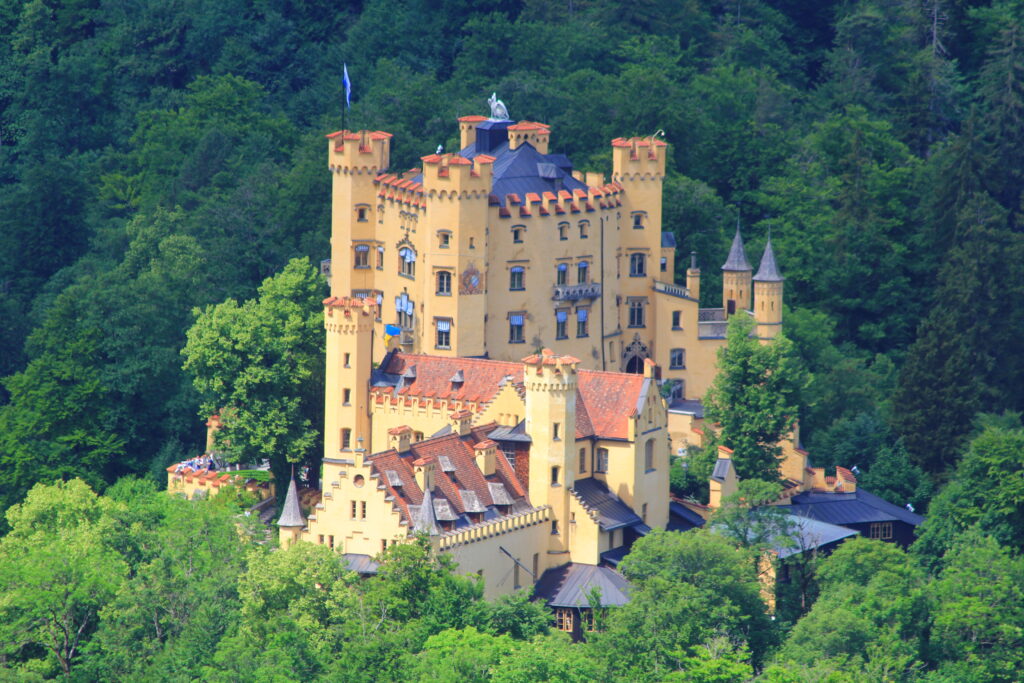
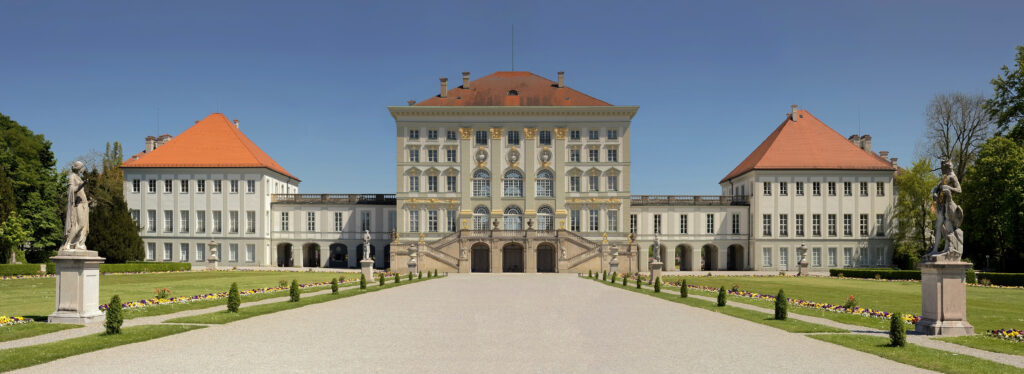
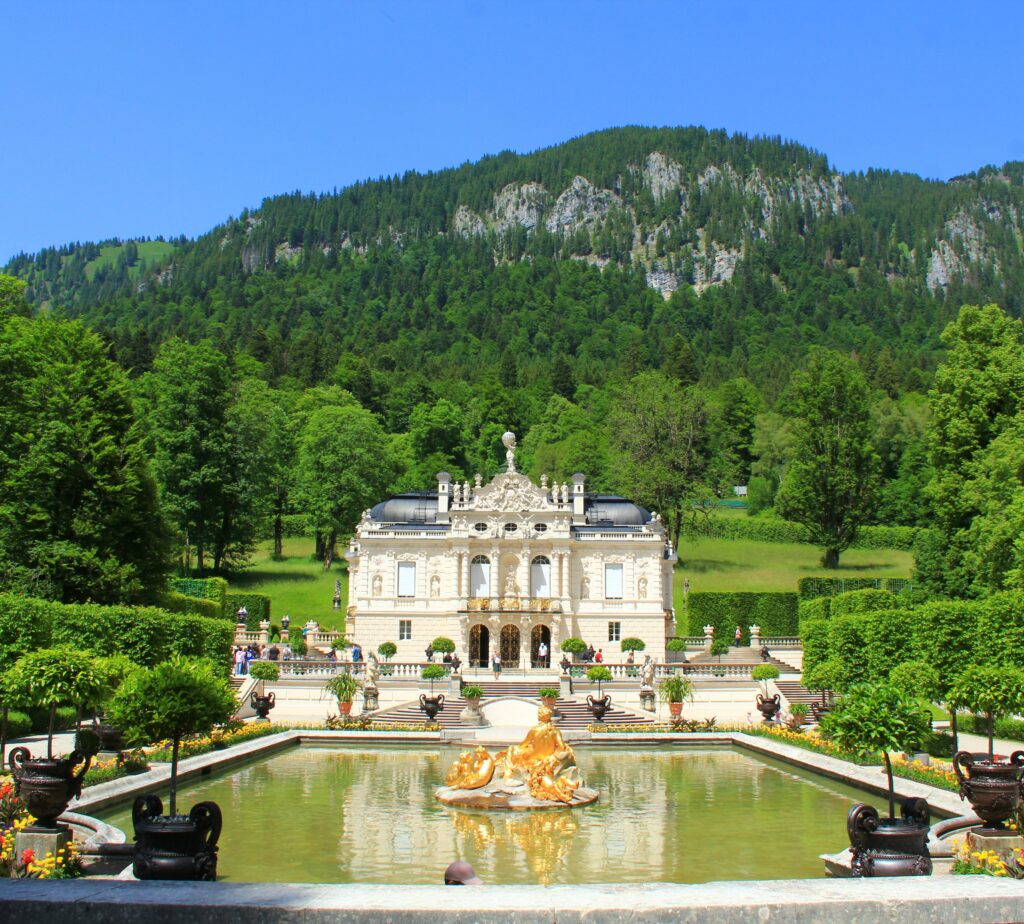
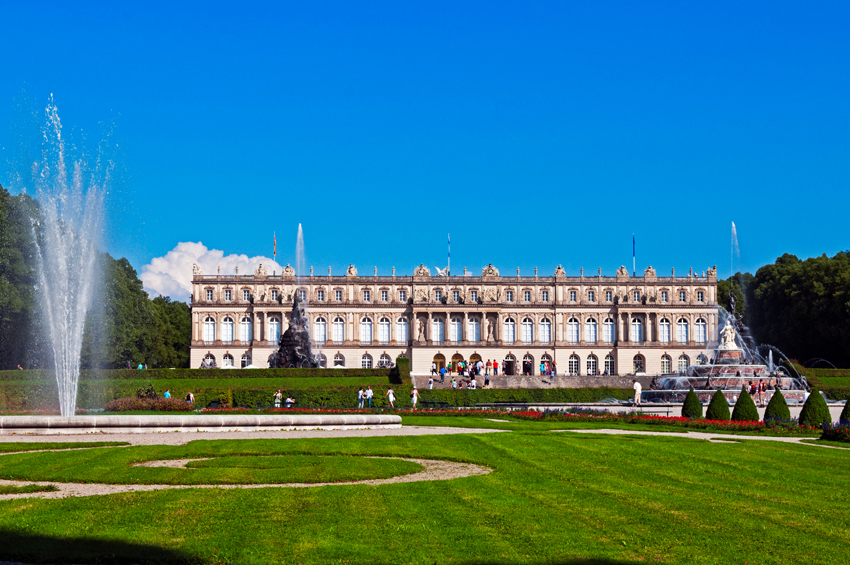
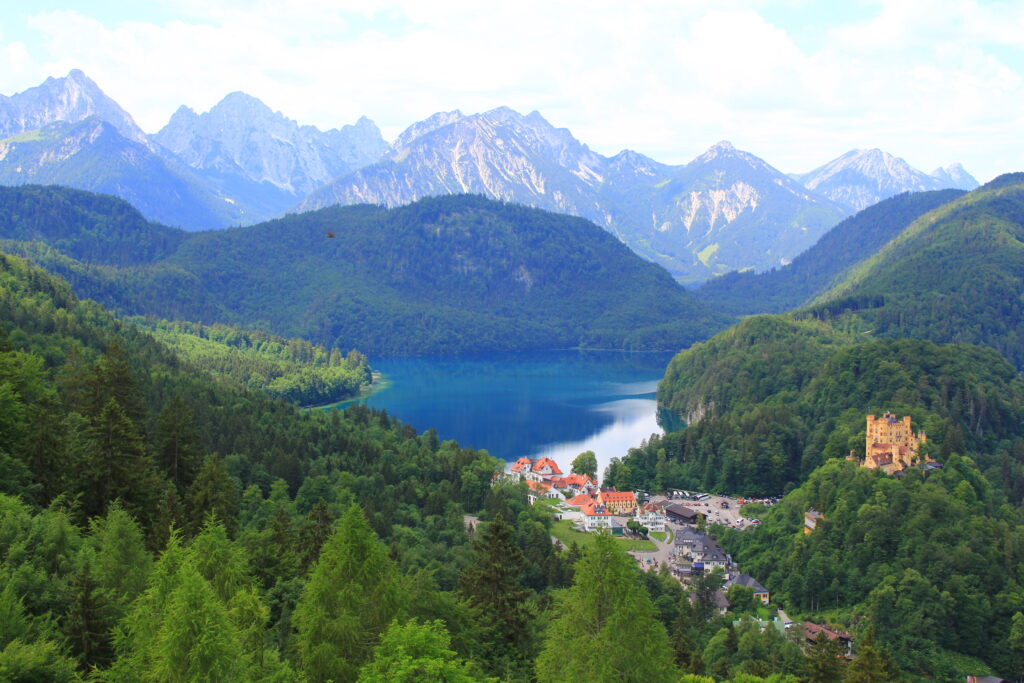
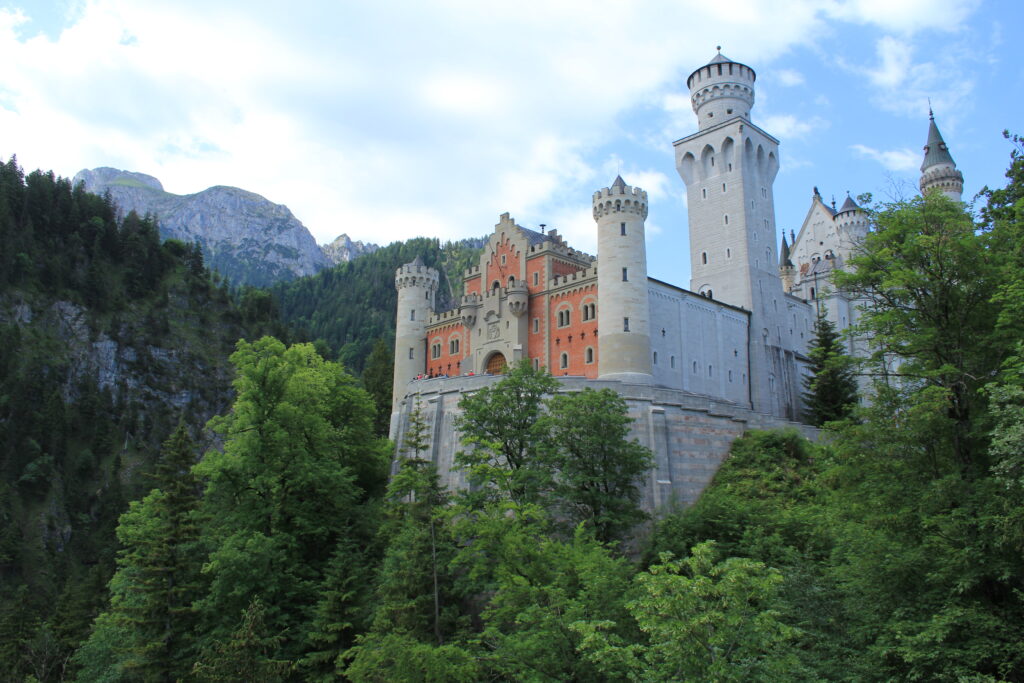
My first stop was at the most famous of these buildings, Schloss Neuschwanstein, built on a high crag in the foothills of the Alps near the town of Füssen. Generally described as a “Fairy-tale Castle”, it featured in the 1968 film Chitty Chitty Bang Bang and is believed to have been the inspiration for Cinderella’s and the Sleeping Beauty’s castles in the Disney theme parks.
It certainly looks like something out of a fairy-tale. Influenced by medieval architecture, and the operas of Wagner, notably Tannhäuser and Lohengrin – both of which feature knights – it is built mostly of white stone in the Romanesque style with battlements and conical turrets. The initial drawings for the castle were provided by a stage set designer – Ludwig having a passion for the theatre – with architects being brought in later to realise the king’s vision.
The setting is fabulous. Views to the north over the rich farmland beside the River Lech; to the south the precipitous Pöllat Gorge and rocky, towering peaks that are blanketed in snow in winter and often shrouded in atmospheric mist at other times.
From the valley below, the castle looks quite small, but as you walk up the steep winding road through the forest and round the final bend, you see just how enormous it is. Work on the building began in 1869 and seventeen years later, when the king died in 1886, it was still unfinished. At that stage it was called Neu Hohenschwangau. It was rechristened Neuschwanstein after Ludwig’s death, and within weeks it was opened to the paying public in an attempt to recoup some of the huge costs of construction.
Going round the building, you can see why it was so expensive. The opulence is breathtaking – virtually every surface adorned with elaborate paintings and gilt decoration, particularly the Singers’ Hall and the Throne Room, which doesn’t actually have a throne in it; one was planned but never made.
From one of the balconies, you get a magnificent view of the mountains and two lakes, the Alpsee and Schwansee. On a low ridge between the lakes is Schloss Hohenschwangau, rebuilt by Ludwig’s father, Maximilian. Smaller and less obviously luxurious than Neuschwanstein, it is nevertheless a very impressive residence, the rooms decorated with paintings of scenes from German myths and sagas and the walls concealing a network of narrow passages which the servants could use to discreetly stoke the ceramic stoves that heated the building.
Driving forty miles to the east, I arrived at another of Ludwig’s extravagant edifices, Linderhof. In German, there is only one word to describe these royal buildings: Schloss. But in English we have two words, with very different meanings: palace and castle. Neuschwanstein and Hohenschwangau are definitely castles, but Linderhof is undoubtedly a palace.
It’s tiny compared to the other two, but strikingly attractive. Built in the Baroque and Rococo styles, it’s made of white stone and looks like a giant wedding cake. It nestles in a valley surrounded by mountains and was Ludwig’s favourite residence. It has only a handful of rooms. But what rooms they are! Every one decorated and furnished in the gaudiest, most over the top fashion you’ve ever seen, particularly the king’s bedchamber and the Hall of Mirrors which in Ludwig’s day, illuminated at night by hundreds of candles, must have been an enchanting sight.
The dining room contains the famous “Tischlein-Deck-Dich” – Table Lay Yourself – a table which could be set with food and crockery in the kitchen downstairs and then winched up through the floor to the king (he liked to be waited on, but didn’t like to see the people doing the waiting).
The grounds are well worth exploring as they contain various fascinating smaller buildings: a Moorish Kiosk, a Moroccan House and the Venus Grotto – unfortunately closed to the public for renovations which are taking years to complete, but which contains an artificial cavern complete with stalactites and stalagmites and a lake on which Ludwig liked to float in a gilded seashell-shaped boat, dressed as the Grail knight Lohengrin.
From Linderhof, I continued driving east to Bavaria’s largest lake, Chiemsee, where on an island accessed by a ferry, Ludwig built his “mini-Versailles”, Herrenchiemsee. The setting is less dramatic than the surroundings of his other homes, but the building itself is magnificent. The king ran out of money before the palace could be finished, but the completed rooms include a dazzling Hall of Mirrors which is thirty metres longer than its counterpart in the real Versailles.
From Herrenchiemsee, I drove north to Munich and the Residenz in the city centre, built originally as a castle in the 14th century but developed into a sprawling palace over the subsequent years. In 1867, Ludwig added a Winter Garden to the roof of the building, a sort of enormous greenhouse containing a lake, tropical plants, peacocks and a parrot which could squawk “Good evening” in German. The lake, unfortunately, leaked, obliging the servants who had the quarters immediately beneath it to sleep under umbrellas. Alas for the modern visitor, the Winter Garden was removed after Ludwig’s death for safety reasons (the walls couldn’t take the weight of all the soil and water) because it would have been a sight well worth seeing.
Across the city, a short tram ride from the centre, I visited the Nymphenburg Palace, probably the most elegant of Ludwig’s homes – and the one in which he was born. The building is vast and the grounds even more extensive, containing lakes and fountains and numerous smaller buildings, including some exotic pavilions – one of them, the Amalienburg, containing yet another Hall of Mirrors into which the king, during his unhappy childhood, would escape to be alone with his thoughts. No doubt it was here that he began to dream about the fantastic palaces he would later design and build.
Ludwig was a complex, fascinating man, probably mentally unstable (see my Blog: The Madness of King Ludwig), but endowed with the fertile imagination and fierce royal determination that has bequeathed to the world some beautiful, unforgettable buildings – all of which are open to the public. If you get a chance to visit them, seize it!
